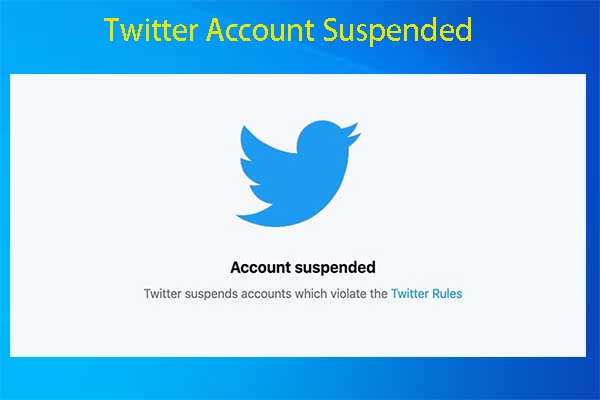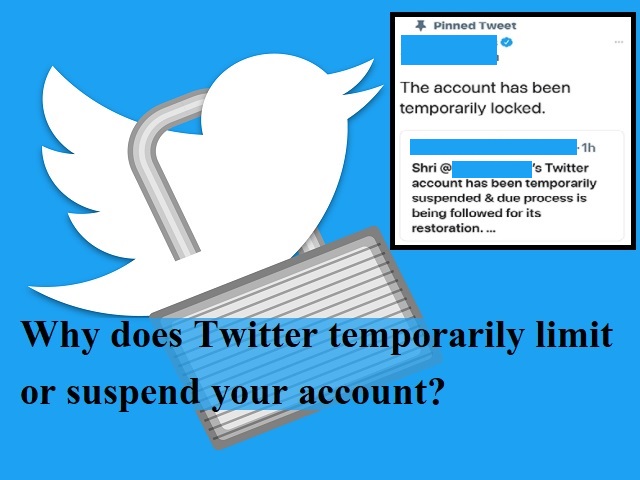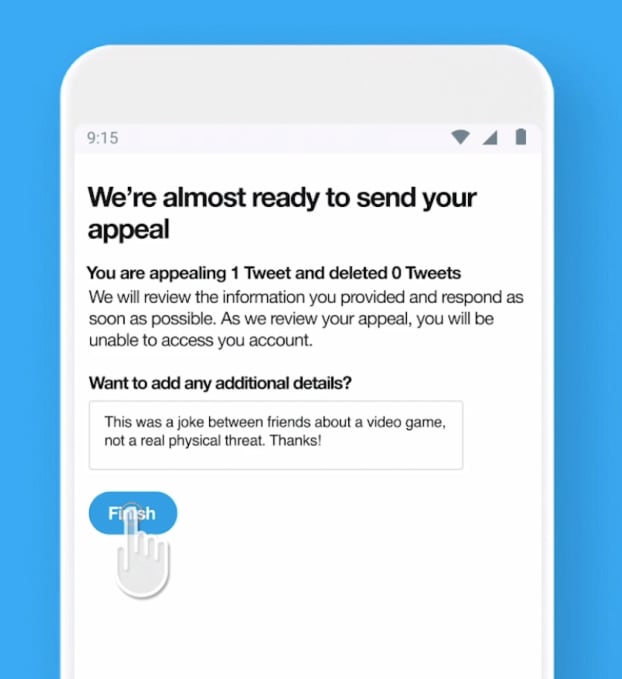Understanding Twitter’s Suspension Policy: What You Need to Know
Twitter’s suspension policy is in place to ensure that users adhere to the platform’s rules and guidelines. When an account is suspended, it can be a frustrating experience, especially if you’re unsure why it happened. To get unsuspended from Twitter, it’s essential to understand the reasons behind the suspension and the different types of suspensions that can occur.
Twitter’s suspension policy is outlined in the platform’s rules and guidelines, which are publicly available on the Twitter website. The policy states that accounts can be suspended for a variety of reasons, including spamming, harassment, and impersonation. Additionally, Twitter may suspend accounts that engage in hate speech, violence, or other forms of abusive behavior.
There are two main types of suspensions on Twitter: temporary and permanent. Temporary suspensions are typically used for less severe infractions, such as spamming or harassment. These suspensions can last anywhere from a few hours to several days, depending on the severity of the infraction. Permanent suspensions, on the other hand, are typically used for more severe infractions, such as hate speech or violence. These suspensions are usually irreversible and can result in the permanent loss of an account.
Some common infractions that can lead to suspension include:
- Spamming: Sending unsolicited messages or tweets to other users.
- Harassment: Engaging in abusive or threatening behavior towards other users.
- Impersonation: Creating an account that impersonates another user or entity.
- Hate speech: Engaging in speech that promotes violence or discrimination against a particular group or individual.
By understanding Twitter’s suspension policy and the reasons why accounts get suspended, you can take steps to avoid suspension and ensure that your account remains active. If you do find yourself suspended, knowing the policy can help you navigate the appeals process and get unsuspended from Twitter.
It’s worth noting that Twitter’s suspension policy is subject to change, and the platform may update its rules and guidelines at any time. To stay up-to-date on the latest policies and guidelines, it’s essential to regularly review Twitter’s website and terms of service.
Now that you understand Twitter’s suspension policy, you can take the next step in getting unsuspended from Twitter. By following the steps outlined in this article, you can increase your chances of a successful appeal and get back to using your Twitter account in no time.
Why Was Your Twitter Account Suspended? Identifying the Reason
If your Twitter account has been suspended, it’s essential to understand why it happened. Identifying the reason for the suspension is crucial in determining the best course of action to get unsuspended from Twitter. To start, check your email inbox for any notification emails from Twitter. These emails usually provide information on why your account was suspended and what you can do to appeal the decision.
In addition to email notifications, Twitter also provides in-app notifications that can help you understand why your account was suspended. To access these notifications, log in to your Twitter account and navigate to the “Settings” menu. From there, click on “Account” and then “Suspension” to view any notifications related to your account suspension.
Once you’ve reviewed the notifications, it’s time to review Twitter’s rules and guidelines to understand what might have caused the suspension. Twitter’s rules and guidelines are publicly available on the platform’s website, and they outline the types of behavior that can result in account suspension. By reviewing these rules and guidelines, you can gain a better understanding of what might have led to your account suspension and how to avoid similar issues in the future.
Some common reasons for Twitter account suspension include:
- Spamming or posting duplicate content
- Harassment or abusive behavior towards other users
- Impersonation or pretending to be someone else
- Posting hate speech or discriminatory content
By understanding the reason for your account suspension, you can take the necessary steps to appeal the decision and get unsuspended from Twitter. Remember to stay calm and professional throughout the appeal process, and be honest and transparent about what happened.
Now that you’ve identified the reason for your account suspension, it’s time to start preparing your appeal. In the next section, we’ll discuss the importance of gathering information and evidence to support your appeal, and provide tips on how to collect relevant data.
Preparing Your Appeal: Gathering Information and Evidence
When preparing to appeal a Twitter suspension, it’s essential to gather relevant information and evidence to support your case. This will help you build a strong appeal and increase your chances of getting unsuspended from Twitter. In this section, we’ll discuss the types of information and evidence you should collect and how to present it in your appeal.
Types of Information and Evidence to Collect:
- Screenshots of the tweets or posts that led to the suspension
- Emails or messages from Twitter regarding the suspension
- Witness statements from other Twitter users who can vouch for your behavior
- Documentation of any previous appeals or correspondence with Twitter
How to Collect Information and Evidence:
Collecting information and evidence can be a time-consuming process, but it’s essential to building a strong appeal. Here are some tips on how to collect the necessary information:
- Take screenshots of the tweets or posts that led to the suspension, including the date and time they were posted
- Save emails or messages from Twitter regarding the suspension, including the date and time they were sent
- Reach out to other Twitter users who can vouch for your behavior and ask them to provide witness statements
- Keep a record of any previous appeals or correspondence with Twitter, including dates and times
How to Present Information and Evidence in Your Appeal:
When presenting your information and evidence in your appeal, it’s essential to be clear and concise. Here are some tips on how to present your information:
- Use a clear and concise format to present your information, such as a numbered list or bullet points
- Include screenshots and other visual evidence to support your appeal
- Use witness statements to provide additional context and support for your appeal
- Be honest and transparent about what happened and take responsibility for your actions
By gathering relevant information and evidence and presenting it in a clear and concise manner, you can build a strong appeal and increase your chances of getting unsuspended from Twitter. Remember to stay calm and professional throughout the appeal process, and be patient as Twitter reviews your appeal.
Writing a Compelling Appeal: Tips and Best Practices
When writing an appeal to get unsuspended from Twitter, it’s essential to be clear, concise, and professional. A well-written appeal can help you effectively communicate your issue and provide supporting evidence to Twitter’s review team. In this section, we’ll provide tips and best practices on how to write a compelling appeal that increases your chances of getting unsuspended from Twitter.
Key Elements of a Compelling Appeal:
- A clear and concise explanation of the issue
- Supporting evidence, such as screenshots and witness statements
- A polite and professional tone
- A clear request for reinstatement
Tips for Writing a Compelling Appeal:
Here are some tips to help you write a compelling appeal:
- Use a clear and concise format to present your information
- Include relevant screenshots and other visual evidence to support your appeal
- Use witness statements to provide additional context and support for your appeal
- Be honest and transparent about what happened and take responsibility for your actions
- Proofread your appeal carefully to ensure it is free of errors and easy to understand
Example of a Successful Appeal Letter:
Here is an example of a successful appeal letter that you can use as a template:
“Dear Twitter Review Team,
I am writing to appeal the suspension of my Twitter account, [username]. I understand that my account was suspended due to [reason for suspension], and I apologize for any inconvenience this may have caused.
I have reviewed Twitter’s rules and guidelines and understand that my actions were in violation of [specific rule or guideline]. I take full responsibility for my actions and assure you that it will not happen again in the future.
I have included screenshots of the tweets that led to the suspension, as well as witness statements from other Twitter users who can vouch for my behavior. I believe that these supporting documents demonstrate that my account was suspended in error and that I am committed to following Twitter’s rules and guidelines in the future.
I respectfully request that you reinstate my Twitter account and allow me to continue using the platform. I appreciate your time and consideration, and I look forward to hearing from you soon.
Thank you for your attention to this matter.
Sincerely,
[Your Name]
This example demonstrates a clear and concise explanation of the issue, supporting evidence, and a polite and professional tone. By following these tips and best practices, you can increase your chances of writing a compelling appeal that gets you unsuspended from Twitter.
Submitting Your Appeal: What to Expect and How to Follow Up
Once you have prepared your appeal, it’s time to submit it to Twitter. In this section, we’ll explain the process of submitting an appeal and what to expect in terms of response time and communication.
How to Submit an Appeal:
To submit an appeal, follow these steps:
- Log in to your Twitter account and navigate to the “Help” section
- Click on “Appeal a suspended account” and follow the prompts to submit your appeal
- Make sure to include all relevant information and evidence to support your appeal
What to Expect After Submitting an Appeal:
After submitting your appeal, Twitter’s review team will review your case and make a decision. This process can take several days or even weeks, depending on the complexity of the case.
During this time, you may receive communication from Twitter’s review team requesting additional information or clarification on certain points. It’s essential to respond promptly and provide any requested information to ensure that your appeal is processed efficiently.
Follow-up on Your Appeal:
If you haven’t received a response from Twitter’s review team within a few days, you can follow up on your appeal by:
- Logging in to your Twitter account and checking the “Help” section for updates on your appeal
- Reaching out to Twitter’s customer service team via email or phone to inquire about the status of your appeal
Escalating the Issue:
If your appeal is denied, you may want to consider escalating the issue to Twitter’s customer service team. This can be done by:
- Reaching out to Twitter’s customer service team via email or phone to request a review of your case
- Providing additional information or evidence to support your appeal
By following these steps and being patient and persistent, you can increase your chances of getting unsuspended from Twitter. Remember to stay calm and professional throughout the appeal process, and don’t hesitate to reach out to Twitter’s customer service team if you need assistance.
Preventing Future Suspensions: Best Practices for Twitter Users
To avoid getting suspended from Twitter in the future, it’s essential to follow the platform’s rules and guidelines. In this section, we’ll provide tips and best practices on how to use Twitter’s built-in features to reduce the risk of suspension.
Understanding Twitter’s Rules and Guidelines:
Twitter’s rules and guidelines are in place to ensure that users have a safe and respectful experience on the platform. To avoid getting suspended, it’s essential to understand what is and isn’t allowed on Twitter.
Using Twitter’s Built-in Features:
Twitter provides several built-in features that can help you avoid getting suspended. These features include:
- Keyword filtering: This feature allows you to filter out certain keywords or phrases from your Twitter feed, reducing the risk of engaging with content that may be against Twitter’s rules.
- Mute: This feature allows you to mute certain users or keywords, reducing the risk of engaging with content that may be against Twitter’s rules.
- Block: This feature allows you to block certain users, reducing the risk of engaging with content that may be against Twitter’s rules.
Best Practices for Twitter Users:
To avoid getting suspended from Twitter, follow these best practices:
- Read and understand Twitter’s rules and guidelines
- Use Twitter’s built-in features to filter out unwanted content
- Be respectful and considerate of other users
- Avoid engaging with content that may be against Twitter’s rules
- Report any suspicious or abusive behavior to Twitter’s support team
By following these best practices and using Twitter’s built-in features, you can reduce the risk of getting suspended from Twitter and ensure a safe and respectful experience on the platform.
Alternative Options: What to Do If Your Appeal is Denied
If your appeal is denied, there are still alternative options available to you. In this section, we’ll explain what you can do if your appeal is denied and provide guidance on how to create a new account while avoiding the mistakes that led to the original suspension.
Creating a New Account:
If your appeal is denied, you may want to consider creating a new Twitter account. However, it’s essential to avoid making the same mistakes that led to the original suspension. Here are some tips to help you create a new account successfully:
- Read and understand Twitter’s rules and guidelines before creating a new account
- Choose a new username and email address that are not associated with your previous account
- Be cautious when following or interacting with users who may have been involved in the original suspension
- Avoid posting content that may be against Twitter’s rules or guidelines
Seeking Support from Twitter’s Customer Service Team:
If you’re not sure what to do after your appeal is denied, you can seek support from Twitter’s customer service team. They can provide you with guidance on how to create a new account and avoid making the same mistakes that led to the original suspension.
How to Seek Support:
To seek support from Twitter’s customer service team, follow these steps:
- Log in to your Twitter account and navigate to the “Help” section
- Click on “Contact us” and fill out the form with your question or concern
- Wait for a response from Twitter’s customer service team, which may take several days or weeks
By following these alternative options, you can still use Twitter even if your appeal is denied. Remember to stay calm and professional throughout the process, and don’t hesitate to seek support if you need it.
Conclusion: Getting Unsuspended from Twitter Requires Patience and Persistence
Getting unsuspended from Twitter requires patience and persistence. It’s essential to stay calm and professional throughout the appeal process, and to be prepared to provide evidence and information to support your case.
In this article, we’ve provided a step-by-step guide on how to get unsuspended from Twitter, including understanding Twitter’s suspension policy, identifying the reason for your suspension, preparing your appeal, writing a compelling appeal, submitting your appeal, and preventing future suspensions.
We’ve also discussed alternative options available to users if their appeal is denied, including creating a new account or seeking support from Twitter’s customer service team.
Remember, getting unsuspended from Twitter is not a guarantee, but by following the steps outlined in this article, you can increase your chances of success.
Key Takeaways:
- Understand Twitter’s suspension policy and the reasons why accounts get suspended
- Identify the reason for your suspension and gather evidence to support your appeal
- Write a clear and concise appeal that effectively communicates the issue and provides supporting evidence
- Submit your appeal and follow up on it to ensure that it is processed efficiently
- Prevent future suspensions by following Twitter’s rules and guidelines and using Twitter’s built-in features to reduce the risk of suspension
By following these key takeaways, you can increase your chances of getting unsuspended from Twitter and avoid making the same mistakes that led to the original suspension.







